If you’re dealing with knee pain, you don’t have to give up on lower body strength training. These five lunge and squat alternative exercises allow you to strengthen the same muscles, but with much less stress on your knee joints.
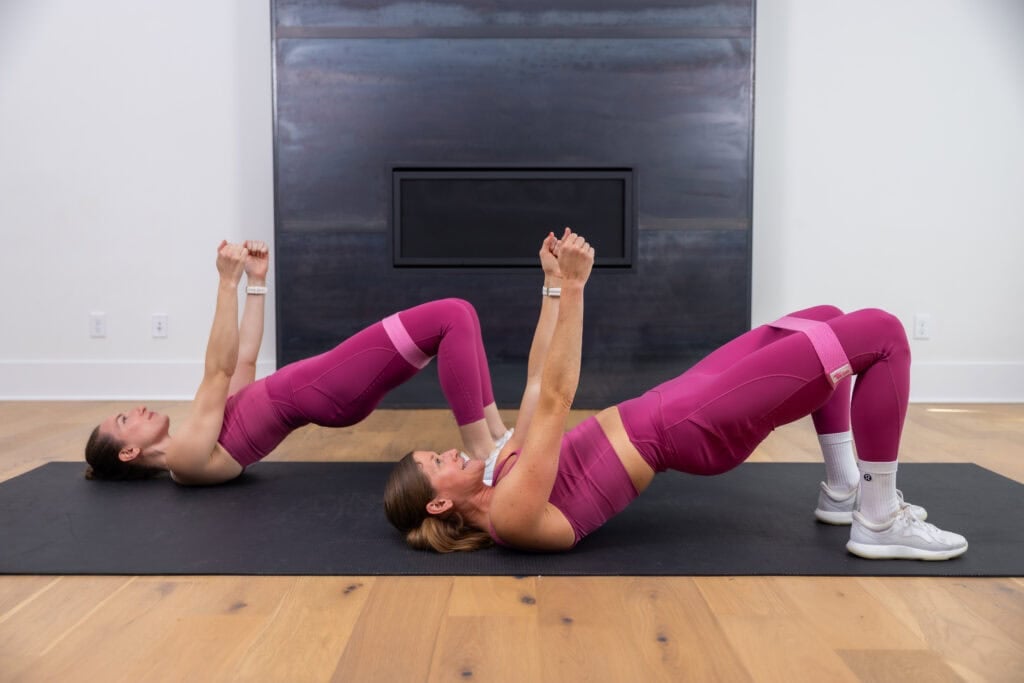
I’ll never take strong, healthy knees for granted—especially after experiencing a meniscus tear and undergoing knee surgery.
I receive messages daily from people dealing with knee pain. Issues like poor form, muscle imbalances, and limited mobility in the ankles or hips can contribute to discomfort around the knee joint during squats and lunges.
Whether you’re recovering from an injury, or a runner who suffers from knee pain — these five squat and lunge alternatives will strengthen your lower body with minimal stress on the knee joint.
Additionally, these knee-friendly exercises are great pregnancy leg workout modifications, especially if you struggle with SPD or pelvic pain.
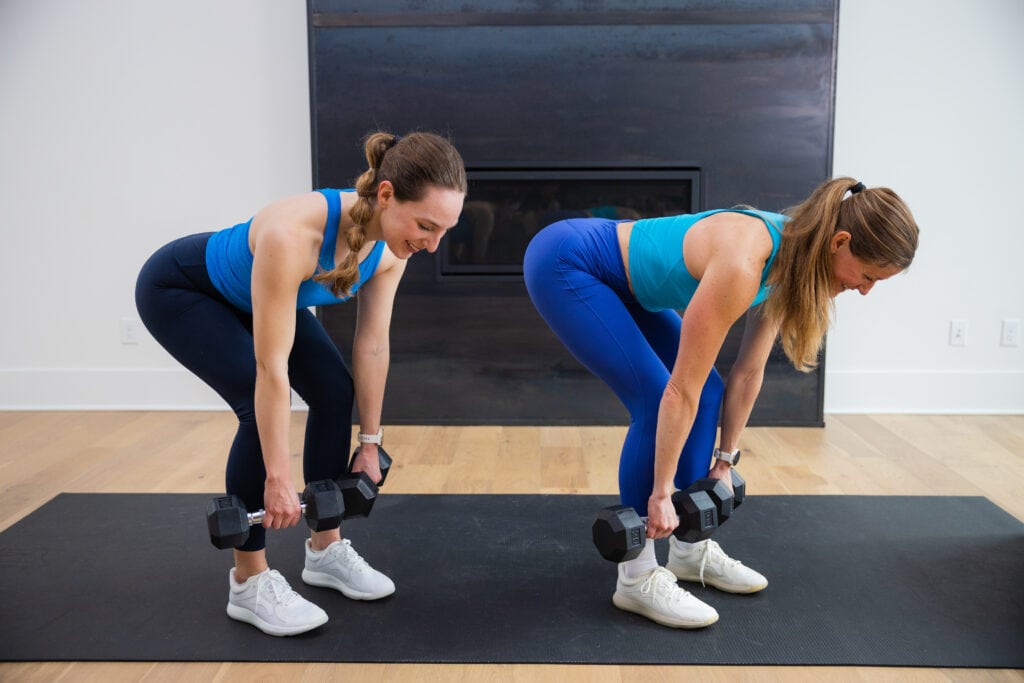
Following a torn meniscus and meniscus surgery, I worked with a physical therapist, barefoot training specialist, and followed the “Knees Over Toes” exercise program from Athletic Truths Group.
All these experts showed me how important strengthening the muscles around your knee joints is in reducing your risk of injury in the future.
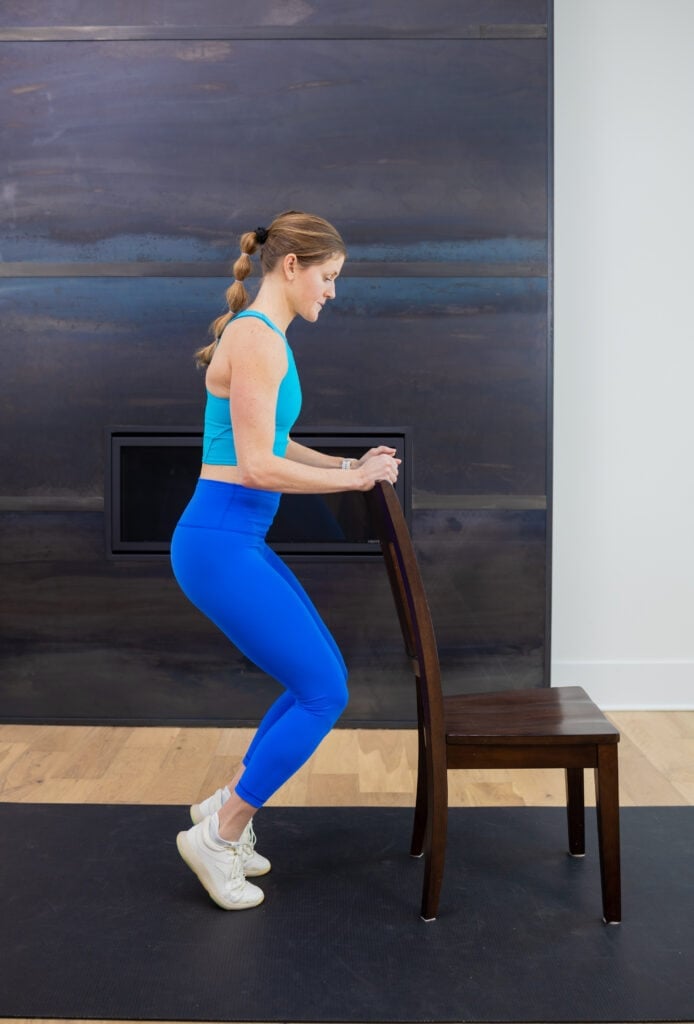
5 Knee Strengthening Exercises
I also highly suggest adding these 5 knee strengthening exercises to your weekly fitness routine.
Strong, Pain-Free Knees
5 Knee-Friendly Alternatives for Bad Knees
1. Glute Bridge
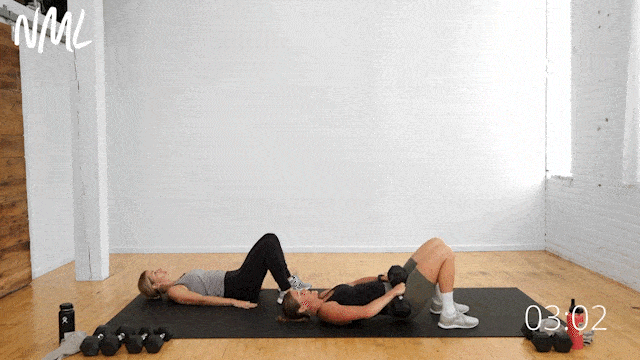
Targets: Hip abductors (outer glutes and thighs), gluteus medius and gluteus minimus (upper and side glutes). Engages the core, stabilizing your pelvis and lower back.
How they protect your knees: Since your feet remain flat on the ground and your knees are in a stable, flexed position, glute bridges avoid placing any significant strain on the knee joint.
How To Do Glute Bridges
Start laying on your back, feet flat on the floor under knees.
Press through your heels to lift your glutes off the mat, squeezing your glutes as you lift. Think about keeping your core engaged and knees in line with your hips.
Exhale, slowly lowering your hips to hover an inch above the mat.
Common mistakes:
Overarching the back during the lift.
Allowing the knees to flare out or collapse inward.
2. Step Ups
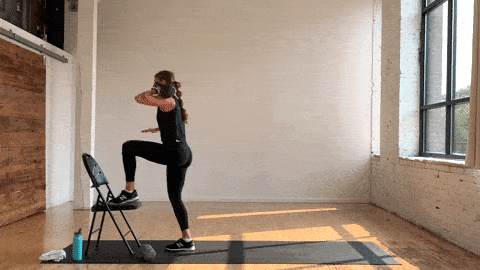
Targets: All three parts of the glutes — the gluteus maximus, gluteus medius, and gluteus minimus. Mimicking the action of climbing stairs, targeting the same muscles as squats and lunges.
How they protect your knees: Step-ups offer controlled movement, allowing you to manage the amount of pressure placed on the knees. By stepping onto a raised platform one leg at a time, you have more control over your movement, reducing the impact on your knee joints.
Note, the higher the platform or step, the more pressure that will be placed on the knee joint. So I suggest starting with a smaller step that’s closer to the ground; such as the bottom stair on a staircase.
How To Do Step Ups
Start standing, feet shoulder-width apart, core tight and engaged. Option to hold a dumbbell vertically at your chest (goblet hold).
Step your right foot up onto a bench or chair, planting your right heel firmly on the surface.
Using the muscle in your right glute (rather than momentum from your left leg), press through your right heel to stand tall.
With control, slowly lower your left foot down to touch the ground, returning to starting position.
Common mistakes:
Pushing off with the back foot instead of driving through the heel of the front foot.
Using momentum instead of controlled muscle engagement.
3. Deadlifts
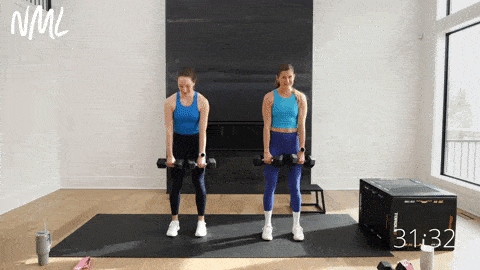
Targets: The posterior chain or backside of the body. Specifically targeting the hamstrings, glutes, hips, calves, lower back and core.
How they protect your knees: The deadlift places more emphasis on the hips and lower back rather than the knees, making it a much safer option for those with knee discomfort or injuries.
How To Do Deadlifts
Start standing feet hip-distance apart and knees bent slightly. Hold a dumbbell in each hand in front of your body (overhand grip, palms face your body).
Hinge forward at the hips, pushing your hips back as you lower the dumbbells down along the front of your body. You should feel a stretch in the back of your legs (hamstrings). Focus on keeping your back in neutral alignment with your neck and shoulders throughout the entire movement. Keep a slight bend in your knees to avoid ‘locking out’ the joint.
Drive through your heels to push your hips forward, squeezing your glutes as you return to a standing position.
Common mistakes:
Rounding the back or shoulders.
Not engaging the core during the lift.
Hyperextending at the top of the movement.
4. Wall Sits
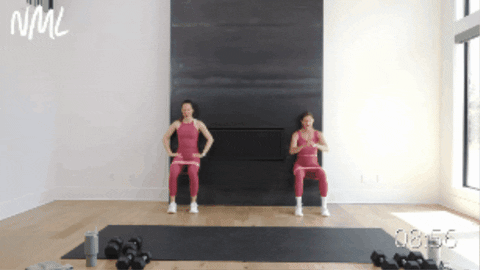
Targets: Legs, glutes, quads, hamstrings, hips and core.
How they protect your knees: Wall sits allow you to hold a squat-like position without the dynamic movement of bending and straightening the knees repeatedly. This reduces wear and tear on the joint.
How To Do Wall Sits
Place your back flat against a wall. Plant your feet firmly on the ground, hip width apart.
Slide your back down the wall until your legs make a 90-degree angle, thighs are parallel to the ground, hips in line with knees.
Hold this position with your back firmly connected to the wall.
With control, stand up, returning to starting position, and repeat.
Common mistakes:
Letting your knees extend too far forward, past your toes.
Not keeping your back flat against the wall.
5. Isometric Holds
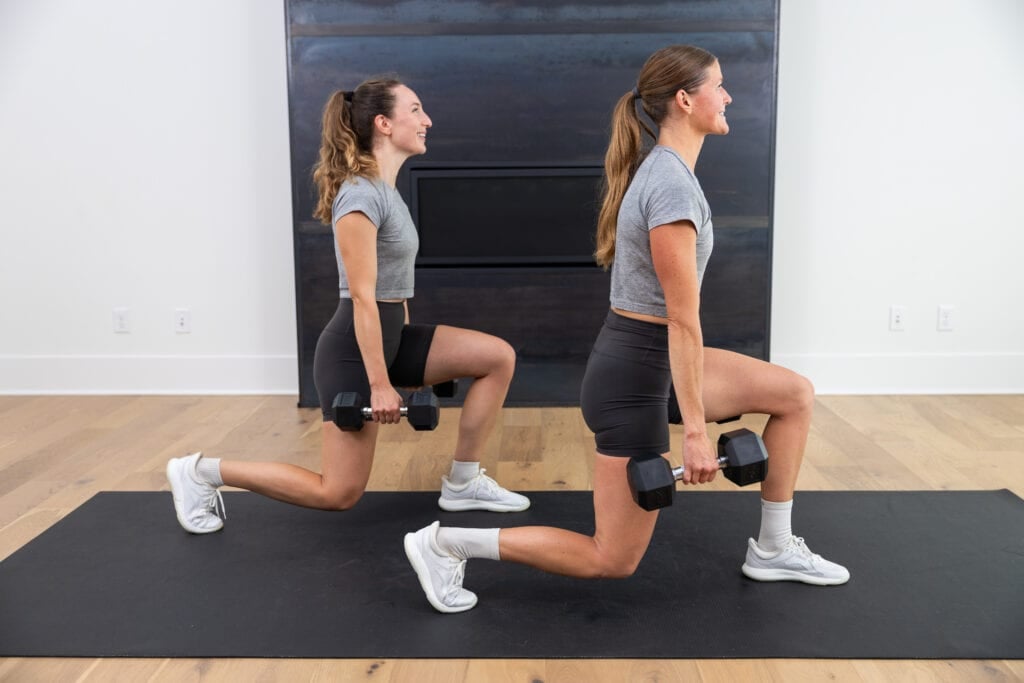
Targets: Quads, hamstrings, glutes and calves.
How they protect your knees: Isometric holds reduce dynamic movement, which can help keep the pressure off your knees. You can adjust your depth to a comfortable level to stay within a pain-free zone.
How To Do An Isometric Lunge Hold
Stand with feet hip-distance apart.
Step your right leg back into a reverse lunge, dropping your right knee down towards the ground as you lower your hips until both knees reach a 90-degree angle, front thigh is parallel to the floor. Lower slowly and with control.
Hold at the bottom of your lunge position, performing an isometric lunge hold.
With control, lower it to the mat, returning to starting position, and repeat.
Common mistakes:
Letting the knees collapse inward or extend too far forward.
Not keeping the core engaged and back neutral during the hold.
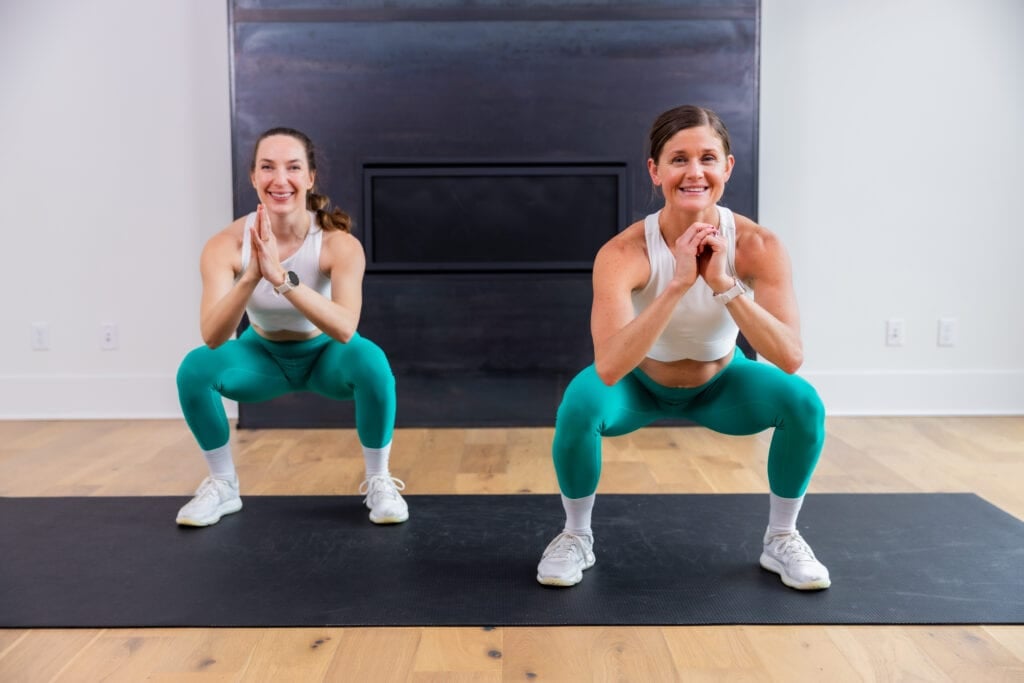
How To Do An Isometric Squat Hold
Stand with your feet hip width distance apart. Your toes should point slightly outward, ensuring your knees will align with your feet when you squat down.
Begin to lower your hips back and down, as if you’re sitting into an invisible chair. Keep your chest lifted and your spine neutral.
Continue lowering until your thighs are parallel to the floor. Your knees should be at a 90-degree angle, aligned over your ankles.
Hold at the bottom of your squat position, performing an isometric lunge hold.
Rise back up with control by pressing through your heels and engaging your glutes, and repeat.
FAQs
You can strengthen your lower body with lunge or squat alternative exercises like glute bridges, step-ups, deadlifts, wall sits, and isometric holds. These movements effectively target the quads, hamstrings, glutes, and core while reducing pressure on the knee joints.
To modify workouts for bad knees, focus on low impact exercises like glute bridges, step-ups, deadlifts, wall sits, and isometric holds. These lunge and squat alternatives build leg strength while reducing knee strain. Static positions like isometric holds and wall sits place less stress on the knees compared to the repetitive motion of lunges and squats, making them gentler on your joints.
Rest is extremely important, especially in the early stages of an injury; but once you are cleared by your doctor, exercise can actually speed up recovery from a knee injury. Begin with one of our Leg/Knee Injury Workouts or Seated Workouts.
Pin this: 5 Lunge and Squat Alternatives
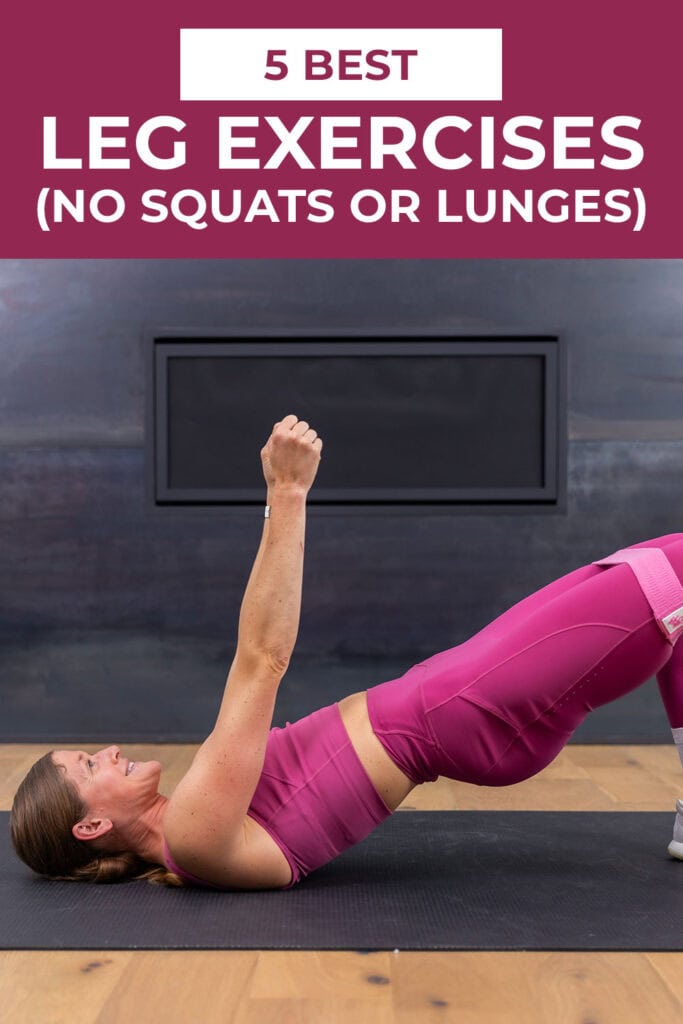
This post includes affiliate links. I do make a small commission for products purchased using these links (at no additional cost to you). Thank you for supporting Nourish Move Love, making the content you see on this blog possible.







